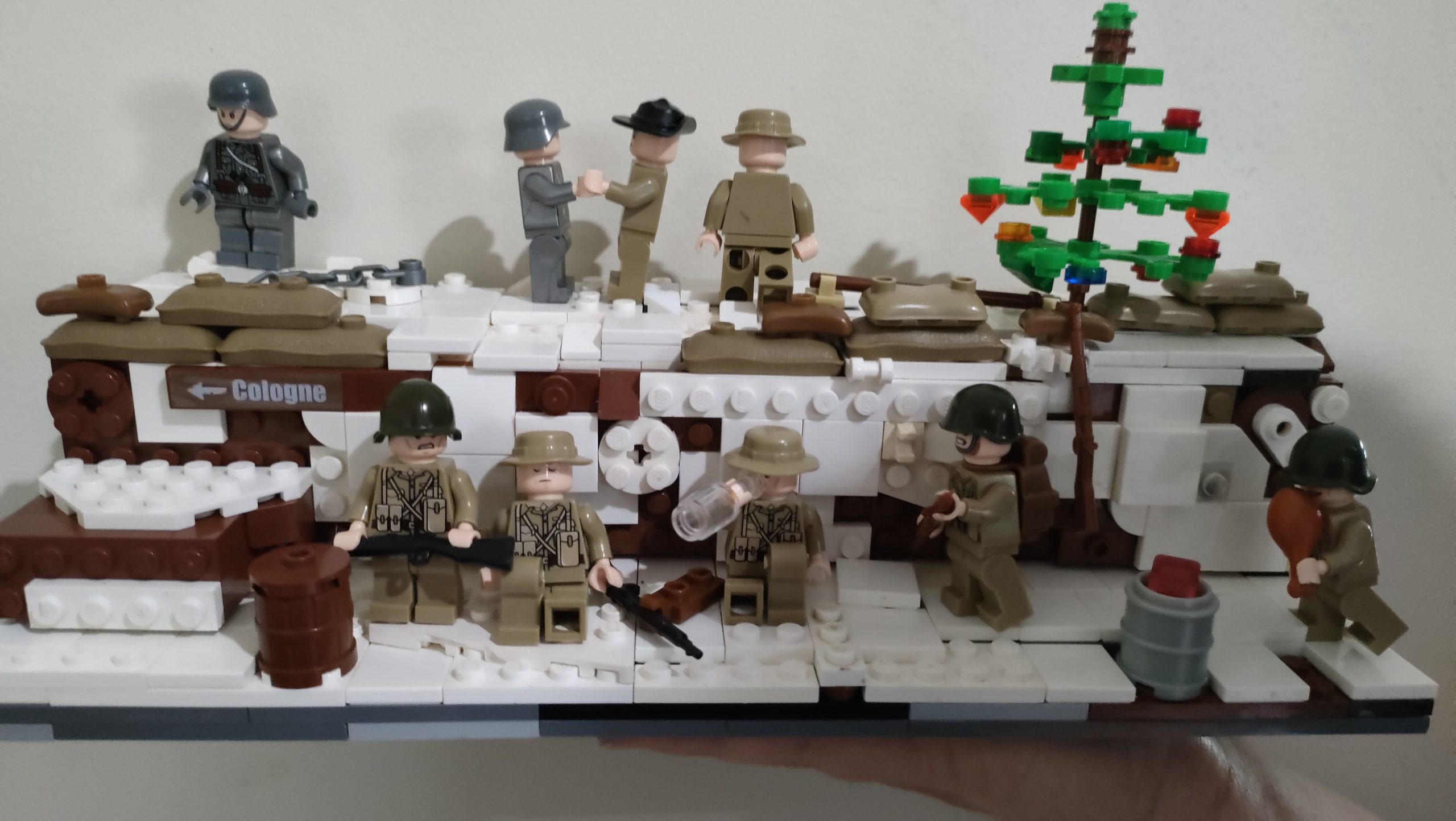By Lachlan – Mid North Coast – NSW (HoTLaNe)
When I was asked what I wanted for Christmas, I said, “LEGO OF COURSE!”. Most Teens would want gifts that don’t often have much value in the future, but all I wanted as a gift was LEGOS. Over time, my collection expanded immensely from sets to the late 1990 and the early 2000’s.
In my LEGO room are endless opportunities to make a new story left and right. Anytime my cat broke a LEGO building, I’d just rebuild the building. Like this one time my cat broke a train station, and I just rebuilt it. I fantasize of how much better the station looked after I was done fixing it.
Most of my LEGO sets range from my dad’s sets when he was a kid from 1987 to the early 1990’s. I have started to use my dad’s LEGO bricks for my LEGO Christmas Truce. The Christmas Truce is a truce that happened in 1914 during The Great War on Christmas night when the soldiers came out and played football and shared gifts all night long. I have been using my dad’s LEGO bricks and new bricks for my LEGO MOC (My Own Creation).
Legos have kept me entertained over the years. I keep making ideas up for my MOC, which makes it ten times better. The possibilities of making MOC’s out of Lego is unlimited. I elaborate LEGO technic, which allows me to make more details on my sets. It gives me more space to put extra bricks down. I recommend practicing with technic LEGO bricks, which will allow you to add more detail to your MOC’s.
From the Teacher
Lachlan’s writing was inspired by the blog, ‘LEGOS’ by an anonymous writer on ‘teen ink – by teens, for teens’. This blog can be found at
https://www.teenink.com/college_guide/college_essays/article/3187/Legos
The writing process involves developing ideas and forming them into coherent sentences that flow together to create a cohesive whole that engages an audience. Engaging with different texts is an important part of strengthening literacy skills and enabling students to write with greater confidence and depth. Students learn to critically analyse texts and apply the skills to their own writing.
Using Literature to Teach
- Identify the main idea in each paragraph and highlight key words or short phrases that speak of this main idea.
- Write the key words into a ‘glossary’ for the student to refer to.
- Re-read the paragraph and then remove it from sight. Give the student time to form the glossary of words into sentences that summarises the paragraph in their own words.
Lachlan put a spin on this by writing it from his own perspective and personal experience. He took the main idea of each paragraph and included additional detail to create a text that was personal to him. The process of summarising and identifying key language in a text helps a student develop ideas for writing. Developing ideas for writing is a challenging process for many students. This lesson demonstrated how analysing someone else’s writing and incorporating their language into students own texts can be a very helpful tool for developing independence in writing.
